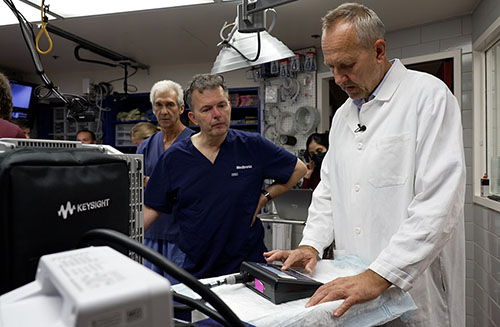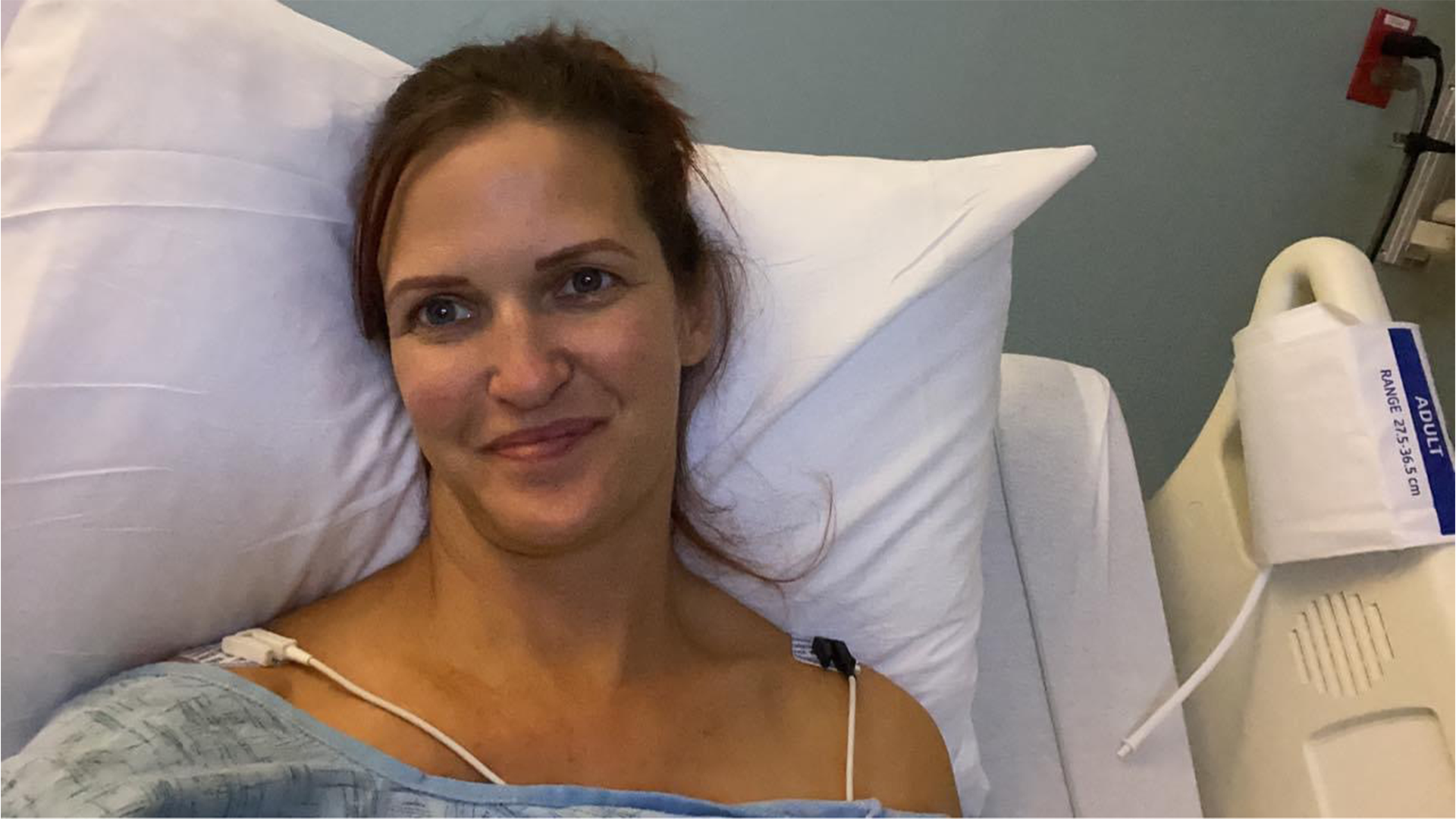The power and potential of electroporation
How a novel technique using electricity to destroy targeted cells might help clinicians treat atrial fibrillation

What do some french fries, Dolly the sheep, and a potential treatment for heart rhythm disorders have in common?
The answer is electroporation, a process by which scientists deliver short bursts of electric pulses to briefly open a cell’s outer wall to manipulate its contents.
Electroporation has a variety of applications — it’s how food scientists make your french fries crunchier by releasing water from within potato cells — and serves as the science behind pulsed field ablation (PFA), a potential, non-thermal treatment for atrial fibrillation, (AFib) the most common heart rhythm disorder in the United States.
Typically, AFib is treated during a procedure that uses cold or heat energy to create small scars in the heart to disrupt the electrical signals causing arrhythmia. But PFA has the potential to change the way cardiac ablations are performed since the procedure doesn’t rely on thermal energy, which can sometimes cause damage to surrounding tissue.
Medtronic has deep clinical expertise in the study of PFA and recently announced promising results from its first global clinical trial of a catheter-based ablation technology that utilizes the power of electroporation.
Even though it is not yet approved in the U.S., company leaders and physicians are excited by PFA’s potential to expand treatment options for AFib patients all over the world.

“For years, Medtronic has been an active leader in the investigation of the safety and efficacy of pulsed field ablation," said Khaldoun Tarakji, chief medical officer of Cardiac Ablation Solutions at Medtronic. "We believe it has the potential to create a paradigm shift in how cardiac ablations are performed for patients suffering from atrial fibrillation."
How reversible electroporation led to Dolly the sheep
In 2015, Medtronic began working exclusively with one of the world’s most renowned experts in the field of electroporation, Dr. Damijan Miklavčič an electrical engineering professor the University of Ljubljana in Slovenia.
Miklavčič first became interested in studying electroporation more than 30 years ago after discovering research that showed how it could significantly increase the cytotoxicity of a drug used in cancer treatment.
“Even in the 70’s, people realized that by using electric discharges and electric pulses, you can kill cells and irreversibly change the structure of the tissue,” Miklavčič said.
But in 1982, a major scientific breakthrough occurred when German scientist figured out a way to introduce genetic material into a cell from a mouse using electroporation. Because it keeps the cell alive, this kind of electroporation is called reversible electroporation. Years later, reversible electroporation was famously used in the creation of Dolly the sheep, the first mammal to be cloned.
Today, reversible electroporation is used in a variety of ways including the delivery of drugs to treat certain diseases. In electrochemotherapy, for example, drugs are delivered inside cancer cells after electric pulses create temporary microscopic openings in the cells’ membranes. The cell can reseal these tiny pores as soon as the electrical pulses are discontinued .
Destroying harmful cells through irreversible electroporation
All cells have a purpose. But sometimes that purpose stands in the way of the body functioning properly. Tumor cells are a great example.
While reversible electroporation leaves the cell alive and functional, the goal of irreversible electroporation is to kill targeted cells by using stronger electrical pulses. In 2007, a scientist from the University of California at Berkley named Boris Rubinsky presented the idea of using irreversible electroporation for cardiac tissue ablation.
The benefit of using irreversible electroporation in cardiac ablations, the researchers hypothesized, was that significant amount of tissue could be destroyed without the risk of heat diffusion causing unwanted damage to surrounding tissue
Developing technology that selectively kills only the targeted or diseased tissue without collateral injury would be a gamechanger in healthcare. And Medtronic has been leading the way in studying the safety and effectiveness of PFA and its potential to treat atrial fibrillation for years.
In 2009, Mark Stewart, a distinguished scientist at the company, published a pivotal paper on using irreversible electroporation in cardiac ablations and is widely credited with coming up with the name “pulsed field ablation.”

“When he (Stewart) said that Medtronic was studying pulse field ablation for cardiac arrhythmias, I was genuinely so happy,” Miklavčič said. “Because I felt this is really the best possible application of irreversible electroporation that I could imagine.”
In its global clinical trial of PFA-based technology, the technology exceeded the safety and efficacy performance goals in the treatment of paroxysmal and persistent AFib.
“These findings demonstrate a critical achievement in the decade-long commitment we have made to researching PFA," said Rebecca Seidel, president, Cardiac Ablation Solutions business, which is part of the Cardiovascular Portfolio at Medtronic. "By building a deep, extensive body of clinical evidence and strong collaboration with clinicians globally, Medtronic hopes to someday offer a complementary suite of PFA technologies to help treat patients with AFib and other arrhythmias."
Learn more about the Medtronic development journey of PFA here.
L001-03072023
Related content



